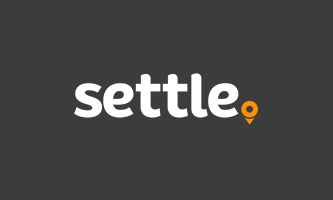Could a new product help the squeezed middle?
Anita Khan, executive director of customer services

‘This is about people, this is about getting people living in better-quality homes that they can afford…getting stuff done is our responsibility.’
These are not my words, but those of Kate Henderson when she was appointed chief executive of the National Housing Federation last September. To my mind, her sentiment is spot on.
At settle, we exist to help people who are struggling to find a place to live. We share this aim in common with many of our housing provider peers, and the question we all have to answer is: how are we responding to that responsibility? Are we using our assets – our homes – to support those who need them most?
In 2016, with our board we started to test this question – to see if we really were serving the people in our communities as best we could.
We worked with Savills to identify housing market needs and where we could better use our assets to meet these needs. The results gave us much food for thought;
- We found that households in North Hertfordshire, earning between £20,000-£25,000 a year, are currently very poorly served by the regional housing market
- The average house price is £400,000 and so they cannot afford to get onto the housing ladder
- They frequently don’t have enough points to qualify for accommodation through the council waiting list
- There are not enough options in the private rental market – it makes up only 7% of the housing market in North Hertfordshire
settle has a large number of three-bed houses – 60% of all our 9,000 properties to be precise. At present, the benefit cap is making this size of property less popular. It was clear there was an opportunity to use some of these homes to alleviate the affordability crisis faced by many households in our communities. If we don’t help, who will?
As a result, our ‘discounted rent’ product was born. So what is ‘discounted rent? We believe it should be a private rental tenure set at between 70-90% of market rent and offering the same level of high-quality customer service experienced by our social rent and affordable rent tenants. The security of tenure should also be the same.
What we are not yet sure about is the best route to our target market of households with an income of £20,000-£25,000. Is it via online property portals and other channels that are open to everyone? Or is it via the existing choice-based lettings portal that we currently operate for our other properties?
Either route has its merits. The latter provides an additional filter of households that clearly do not qualify for a social housing tenancy but which have been seeking help with accommodation for a sustained period. However, the former ensures the Discounted Rent properties would be available to any applicant, subject to an income assessment.
To further explore these issues and to refine our idea, we are launching a 100-home pilot that will run for the next 6-9 months. The homes will be let through a subsidiary, with income being gifted back to settle to support the delivery of our business plan for all our customers. If the pilot is a success, we anticipate launching discounted rent permanently in 2020.
We have noted that there are legitimate questions to answer around the conversion of vacant existing social and affordable rented properties to the private rented sector – even at a discounted rent. In seeking to meet the needs of other sections of society struggling with the housing crisis, will we simply be creating an additional need among those households on the housing waiting list who qualify for a three-bedroom home?
We are under no illusion that this is a tough choice to make. The pilot – launching later this year – will inform our final approach, but ultimately we want to help people live comfortably in quality homes they can afford. That is our responsibility.
Article first published in Inside Housing.



